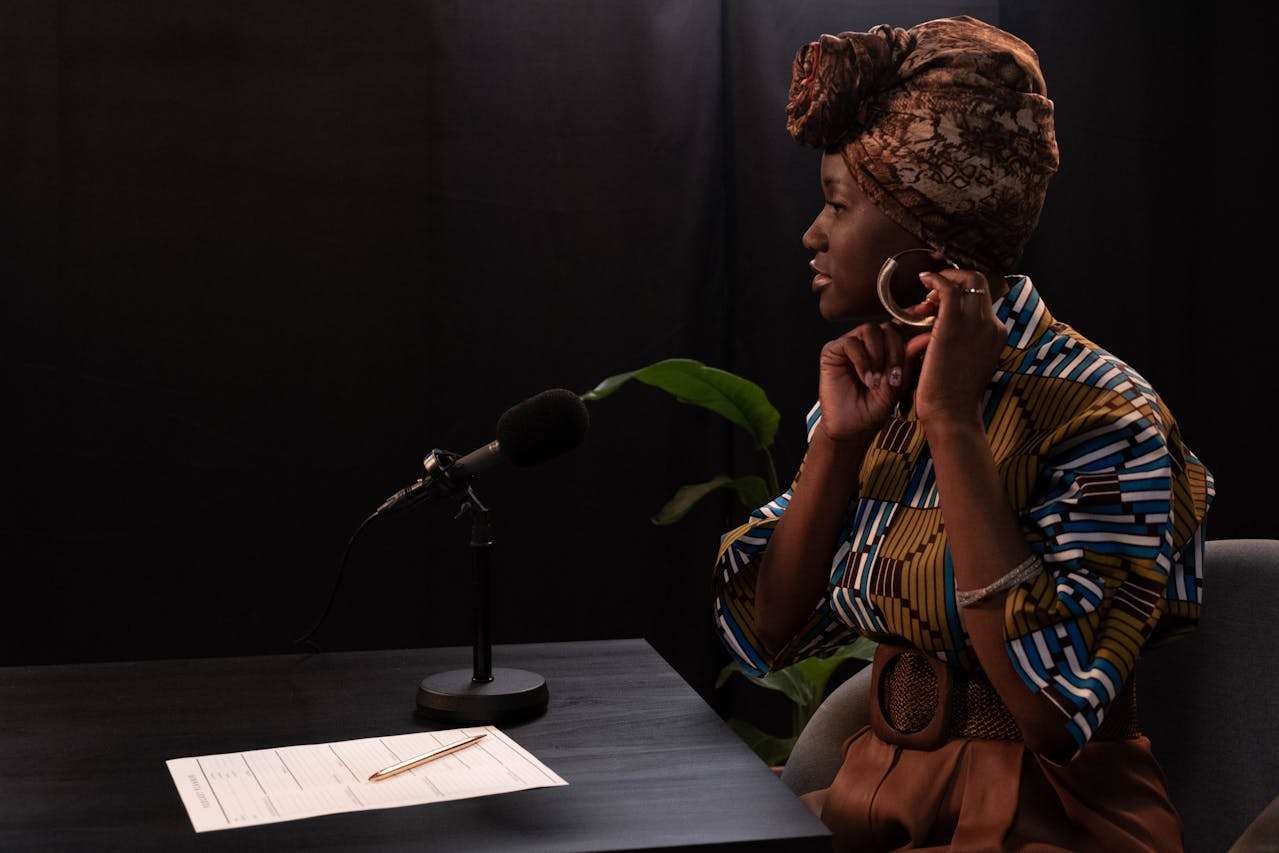
Podcasts have become incredibly popular in recent years, so there is a large audience for any kind of niche you choose. They are relatively easy to get into with minimal investment, as you can get all the equipment you need for as low as $300 or even start bare-bones using a phone and editing software.
However, one of the challenges is knowing just how long to keep each episode. You want to have enough time to talk about a topic in-depth and grab people’s attention, but not too long, where you can start to ramble.
Of course, you can always edit it down and take out parts you don’t like using video editing software like Filmora, which we will go over later, but you need to set a baseline first.
In this article
What is the Average Length of a Podcast?
There are a lot of different podcast styles for different demographics, so you’ll see a wide spread of episode lengths, but the average is just above 40 minutes. A lot of the popular shows where the hosts cover a single topic or have some fun talking about pop culture are around 20 to 40 minutes long.
However, a good part of those can still hit the 1-hour mark, and interview-style shows often go beyond, up to 2 or even 3 hours per episode. The longest ones tend to cover a guest’s entire life story or a deep dive into a particular field with lots of nuances and detailed descriptions of events.
Choosing a Length Based on Your Niche
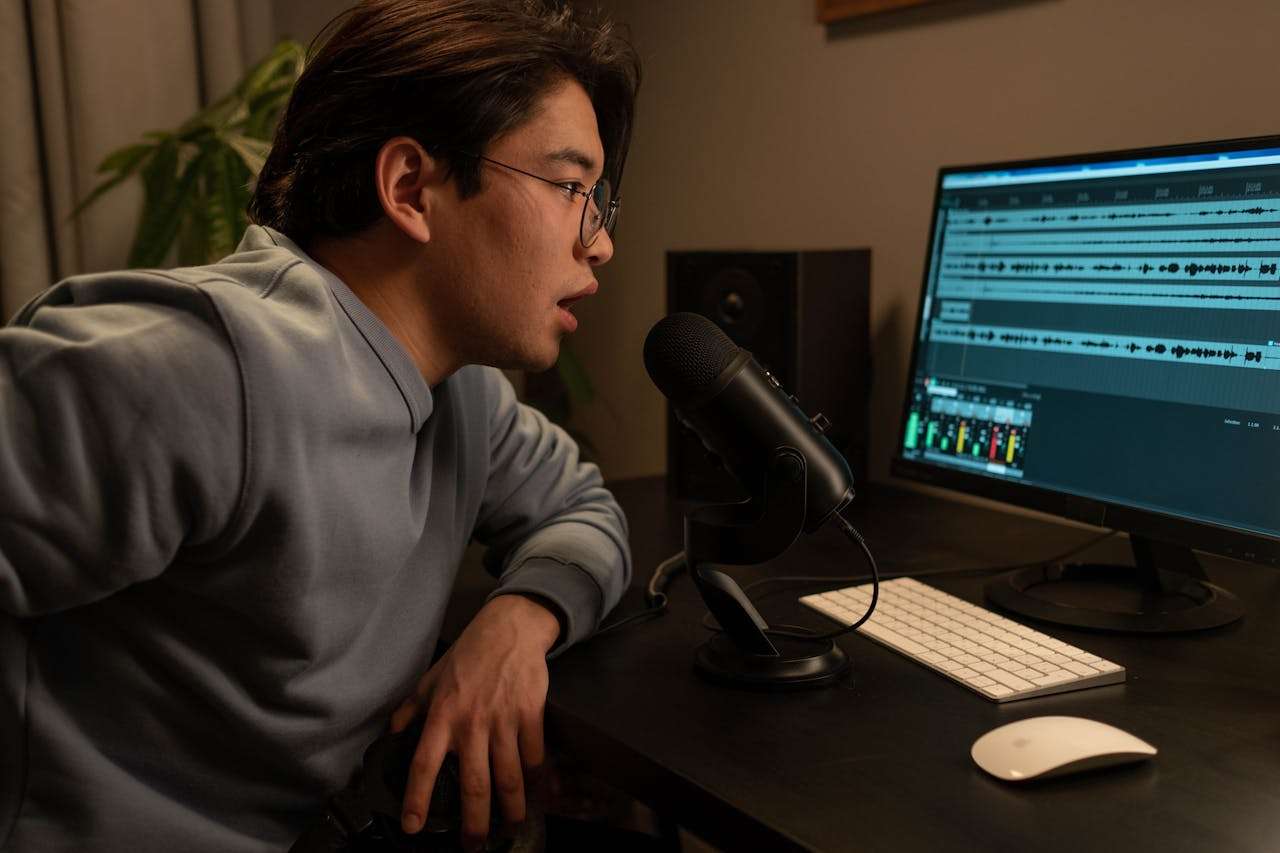
To give you a better idea of what to shoot for, we’ll go into more detail about the different categories of podcasts and what a good length for each one would be.
- Comedy: 40–60 minutes, depending on the style, but you will generally have a lot of room for improvisation, conversational tangents, and fits of laughter.
- Science: 30–50 minutes, enough to grab people’s attention and go into some detail on a topic, but not so long that the listeners can no longer keep up and start mixing up facts.
- Lifestyle: 20–40 minutes, these will usually cover a super-specific topic and provide advice, so going a bit shorter lets people take in the basic ideas and think about how to apply them.
- Health and Fitness: 20–40 minutes, unless it’s a longer interview with an expert, you want it to be long enough for people to listen to during their runs or while resting after a workout.
- News and politics: 20–30 minutes, as people like getting their news in short and precise snippets and then moving on with their day.
- True crime: 30 minutes, just like the average episode of a TV sitcom, something that the fans can enjoy in short bursts or binge, depending on their current mood and situation.
It’s important to remember that most listeners tune in to these episodes while relaxing on the weekend, doing household or backyard chores, driving, walking, or exercising. The most common episode lengths for each category will reflect that, but you can also go a bit under or over if you need to.
Keep Your Style and Format In Mind
The previous examples are good ballpark figures you can start with, but it will also depend on your presentation style, whether you’re alone or have a co-host, how detailed you want to get, etc.
So, how long should a podcast episode be? Well, here are a few examples of how the format and style blend together and how that affects the run time.
- Monotone with lots of facts: If someone is ready to sit down for a lecture, they know what they are getting into, as most college lectures take about 50–60 minutes.
- A single narrator going over recent events: whether it’s true crime, political news, pop culture events, or the latest industry news from whichever niche, you can cover all the key points in 20–30 minutes.
- An interview with different guests: these can get quite long-winded, and you are looking at anywhere between 30–40 minutes for a brief conversation on a particular topic or 1–3 hours for a deep dive.
- A casual style with 2–3 hosts: if you have a couple of hosts, plus the occasional guest where there is a lot of banter and topics change quickly, even if it’s not a comedy podcast, time tends to fly by quickly, so 40–60 minutes is a good average.
As you can see, how you approach the podcast format can drastically change the length of your episodes, no matter what genre you focus on.
How Long Should a Podcast Intro Be
A good intro is catchy and helps people remember a podcast, but it shouldn’t be too long. The general consensus is that a 15 to 30-second intro works best, and there are several styles that you can consider.
Let’s see how you can use Filmora to make a great intro in seconds. The app is available on Windows and macOS and is incredibly easy to use, even for those new to video and audio editing.
We’ll start with an intro sequence for a video podcast:
Step 1: Download Filmora and start a New Project, then Import a video to the media library.
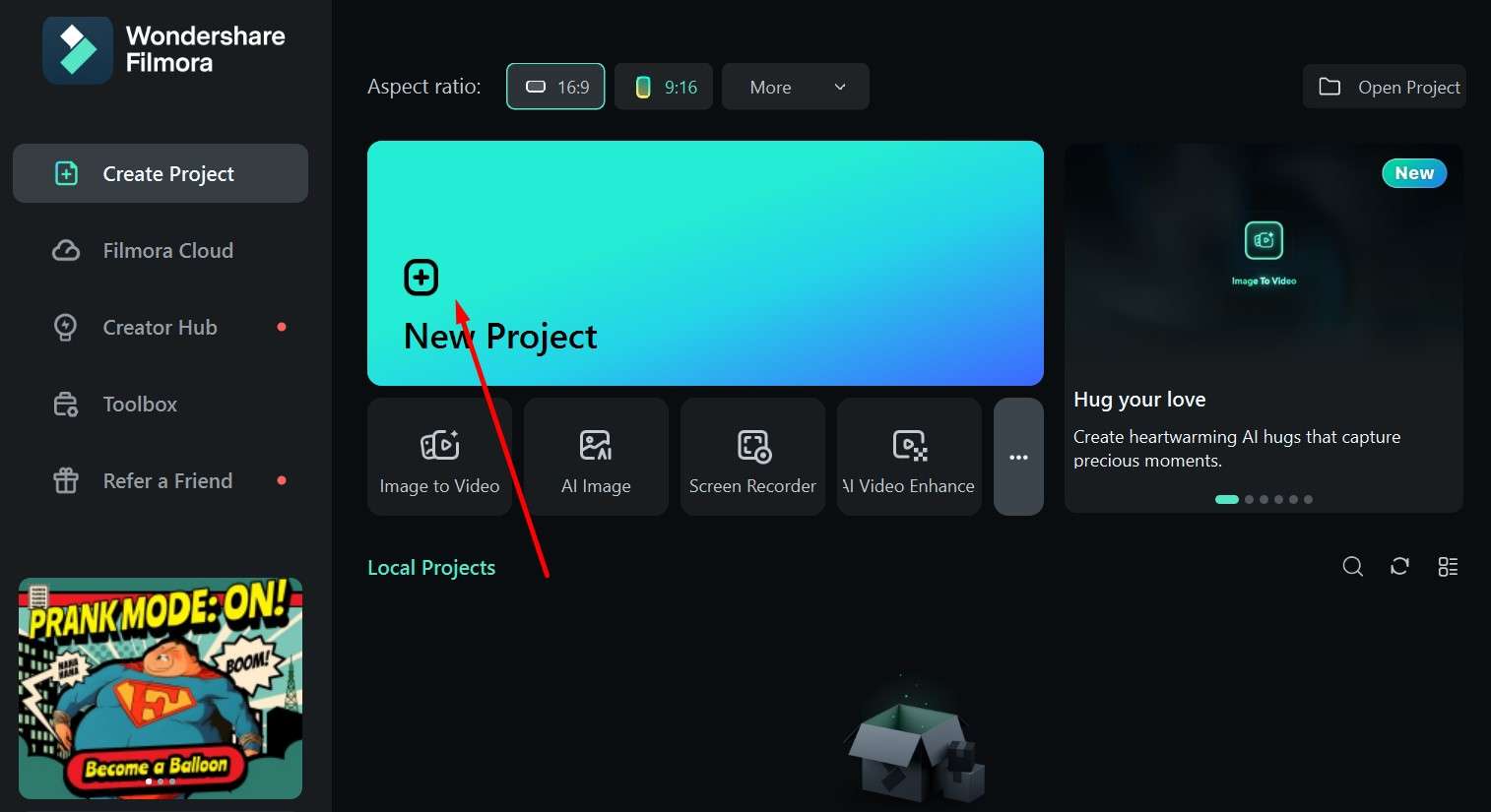
Step 2: Drag the video to the timeline.
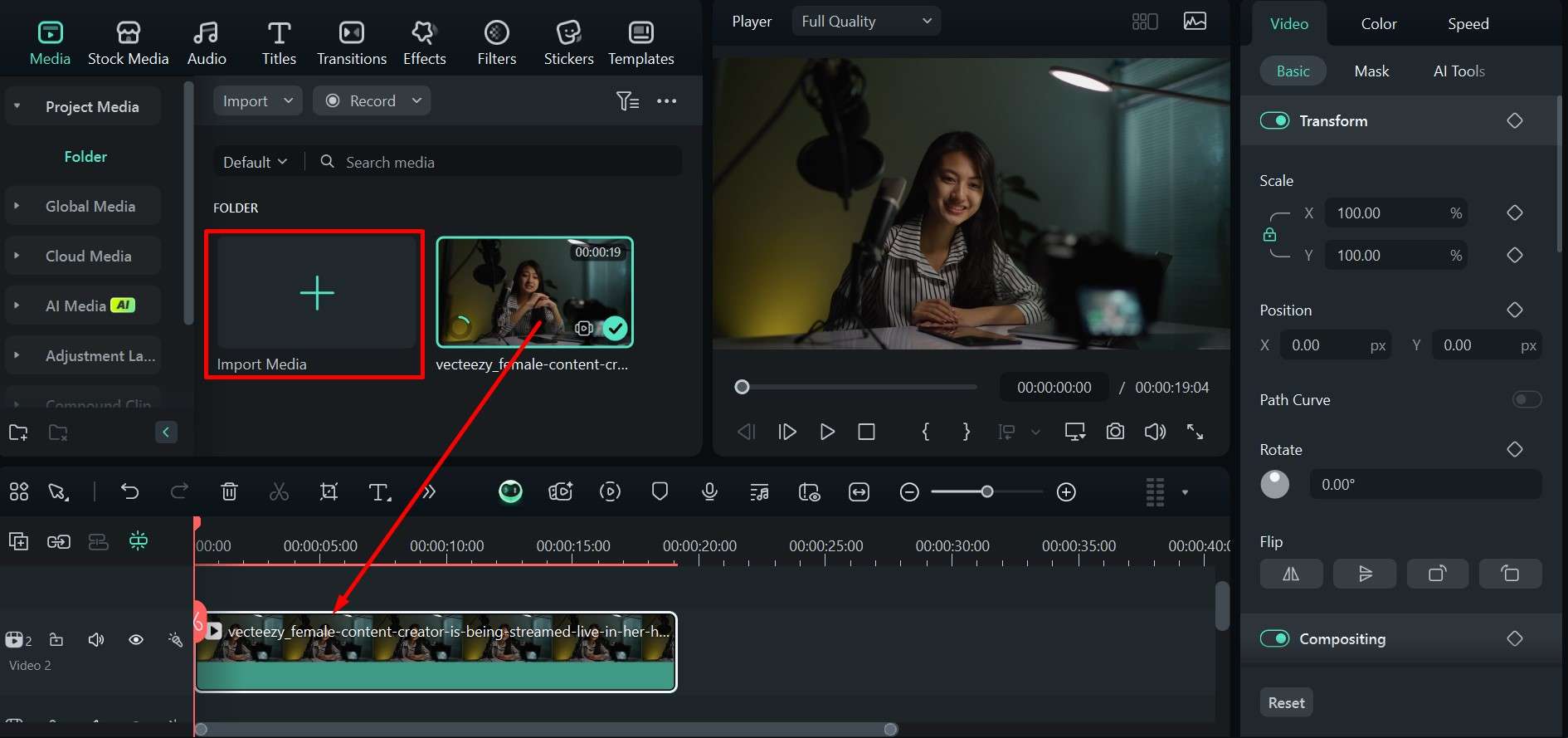
Step 3: Go to the Templates tab and type “Intro” in the search bar, then scroll through the available options and choose one you like.
Step 4: Drag the template to the beginning of the video on the timeline.
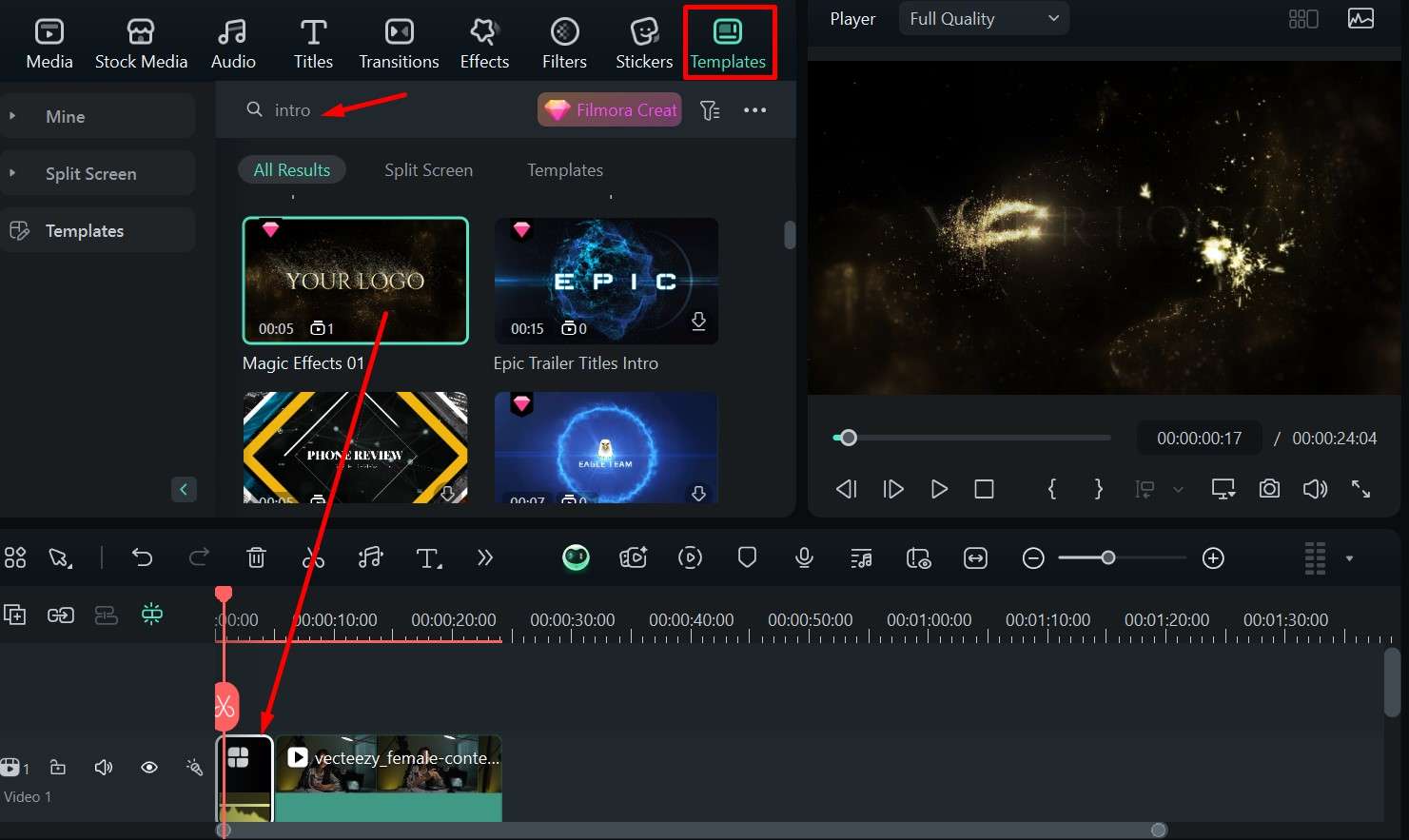
Step 5: Modify it by adding your custom text and choose a font and style for the letters.
Step 6: When you are satisfied with the results, click Export to save the episode with the new intro.
Now we can look at some royalty-free music that you can find in FIlmora’s database and how to use AI to make some unique tunes to match your intro transition or that you can use as a standalone for the audio-only version.
Step 1: Go to the Audio tab and type “Intro” in the search bar, then choose an option that you like.
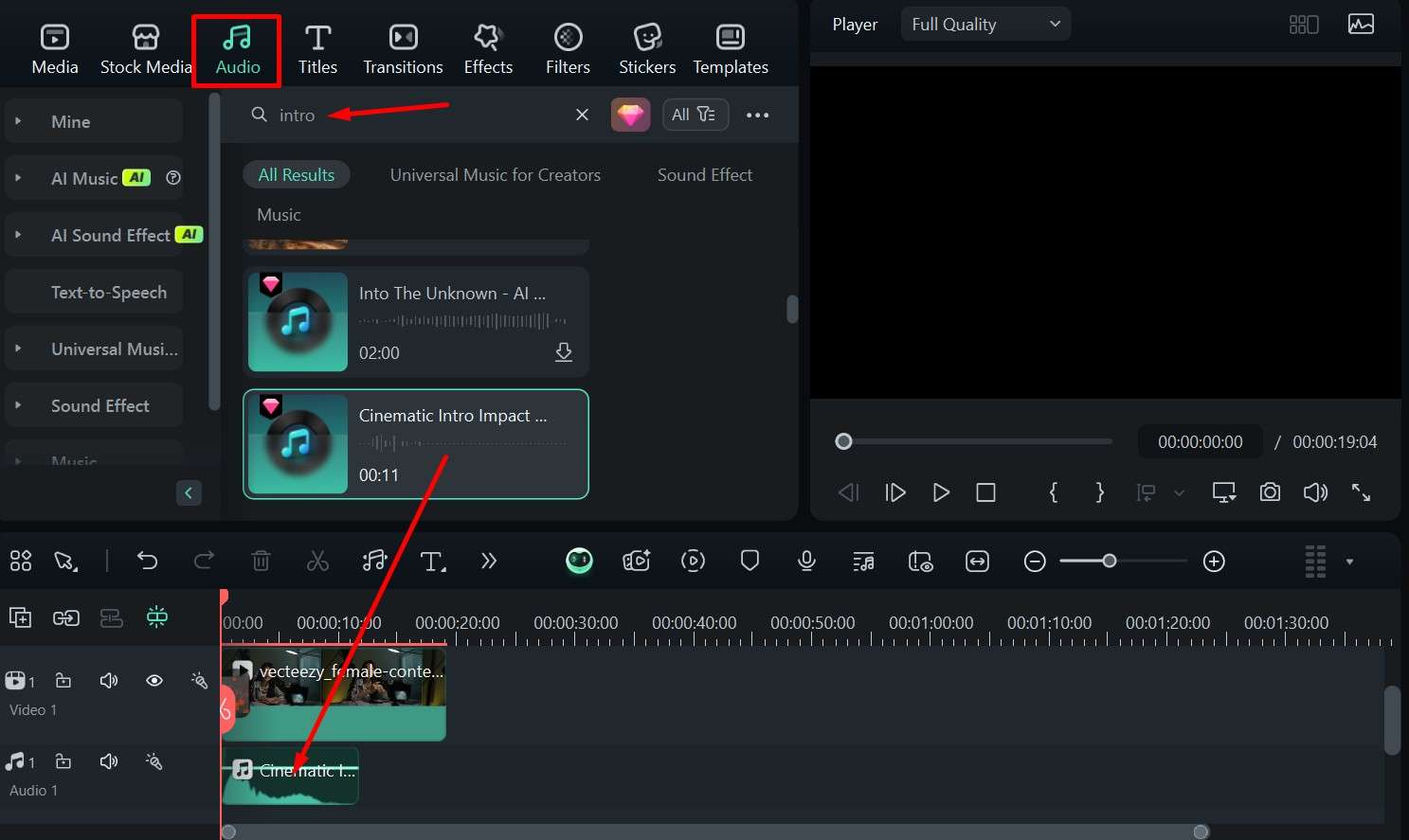
Step 2: Alternatively, go to Audio > AI Music and choose different genres, moods, and themes, then click Generate to get a custom AI instrumental song.
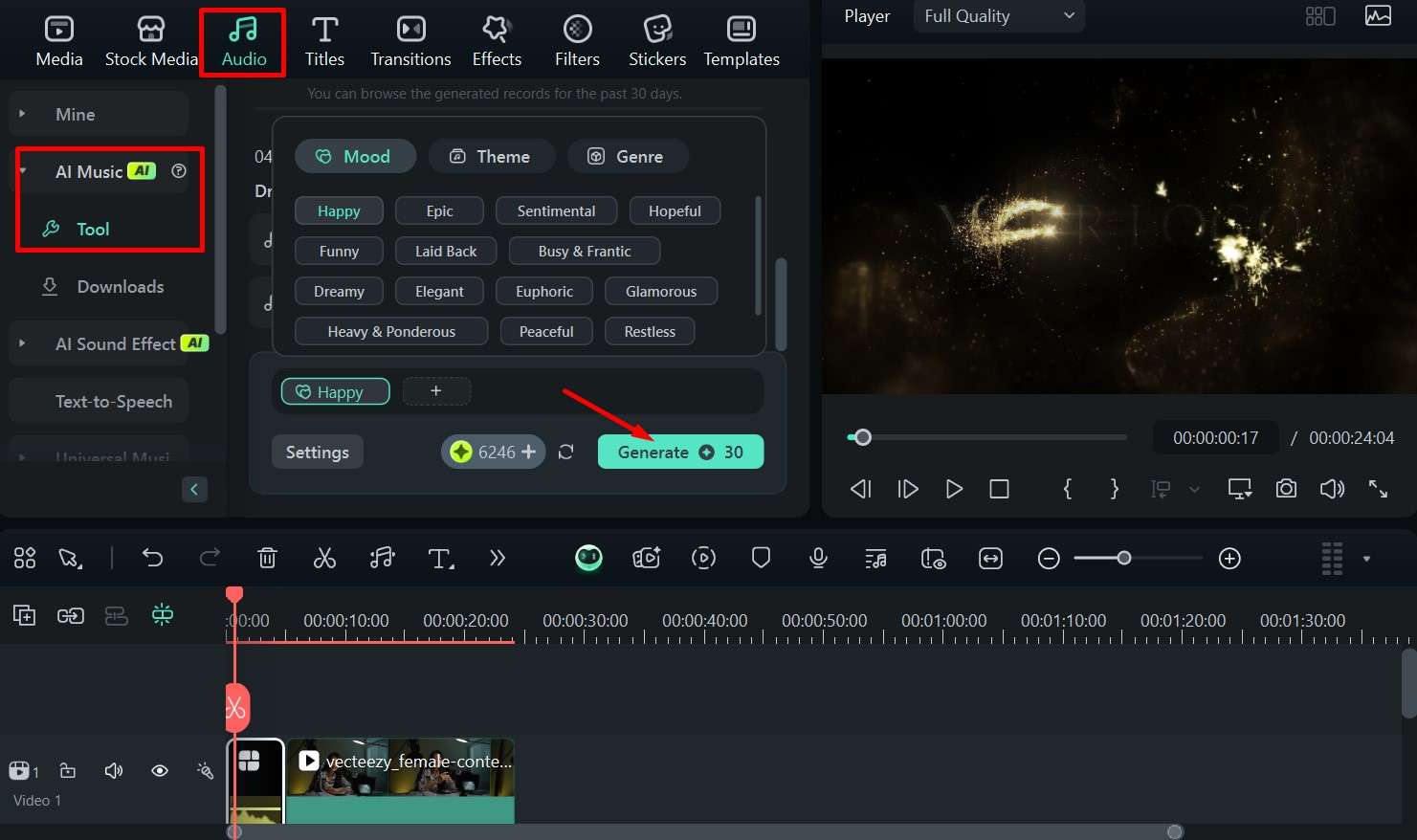
So, how long should podcast intro music be? It’s best to keep it around 20 seconds, give or take, and make sure it matches the tone of your show and your overall brand image.
How to Edit the Raw Footage or Audio
There will always be more footage than the length of an episode, which gives you room to trim it down and use only the best parts.
Here are the steps for cutting videos into clips with Filmora.
Step 1: In the timeline, move the orange playhead to where you want to make the cut and then click the Scissors icon. Repeat for every section you want to isolate.
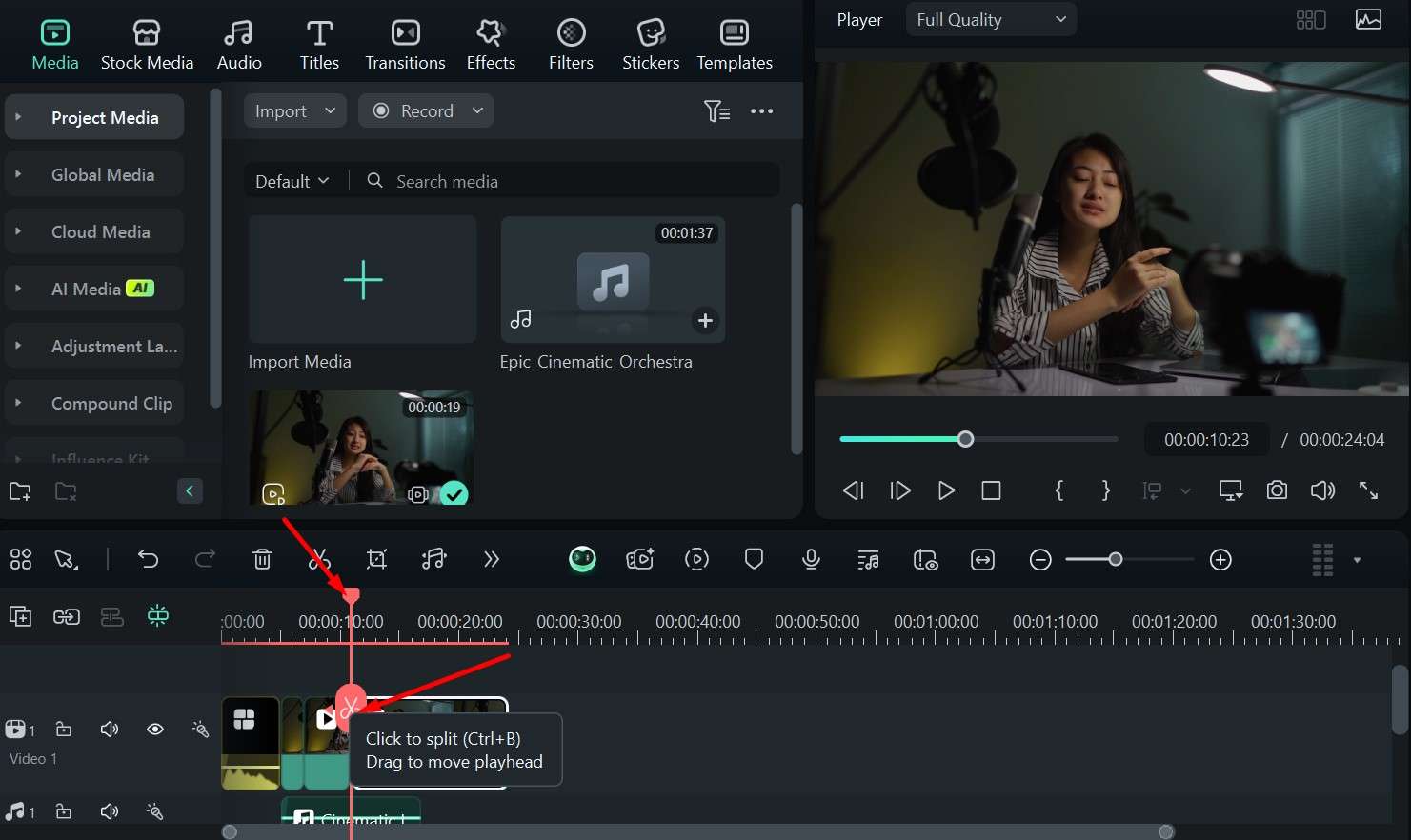
Step 2: Right-click on a section you want to remove and then Delete. You can also just select it and press the Delete button on your keyboard.
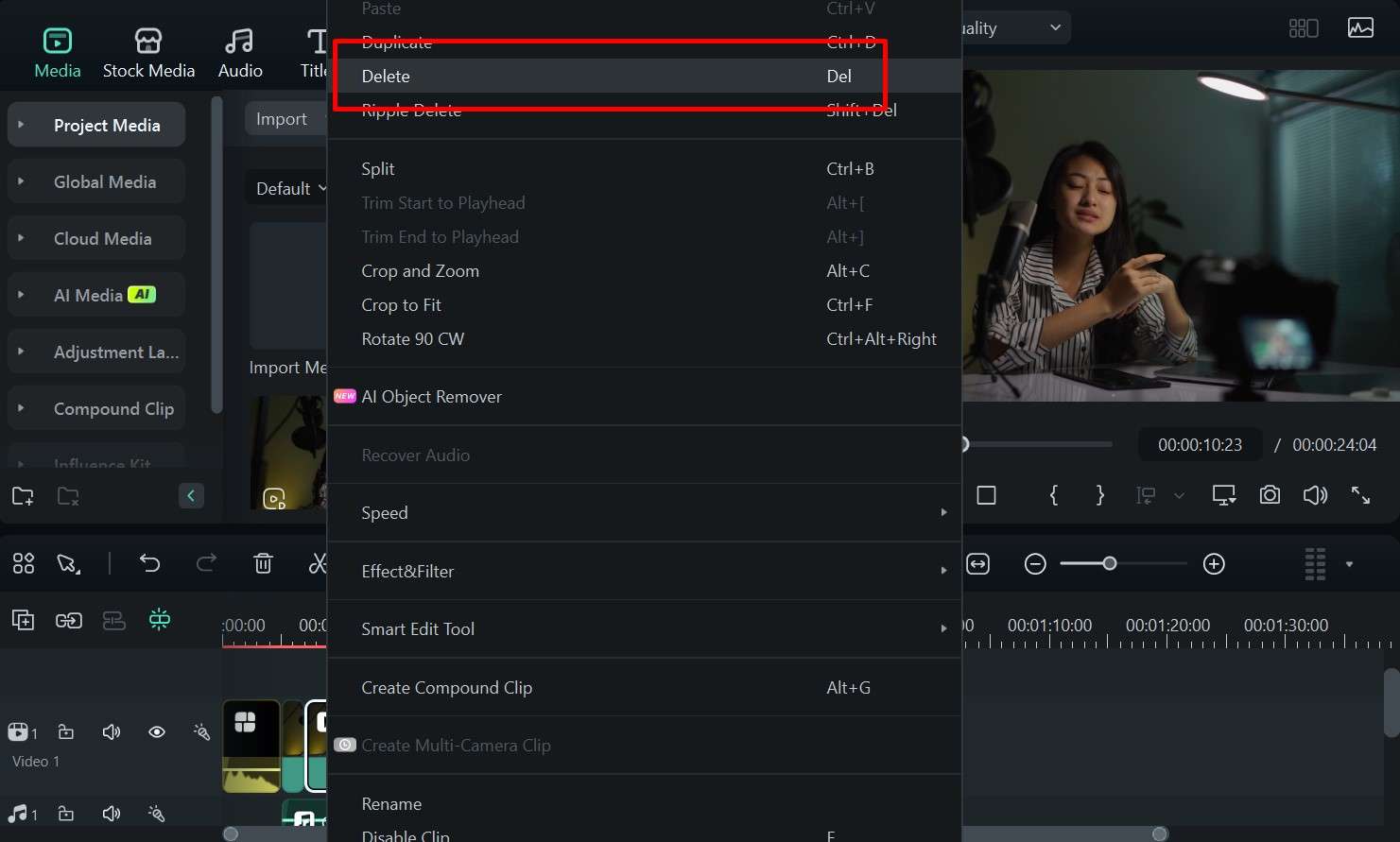
Step 3: When you are done, click Export to save the project.
Filmora also has useful AI features that can help you get the most out of each episode without spending a lot of time on post-production.
Audio to video
If you have sections of the podcast where someone is telling a story or you are talking about historical events, you can use AI to create a short video based on your narration. There are several styles to choose from, and you can get a great little visual to add to your podcast.
Smart short clips
You’ll want to prepare some shareable clips to use for social media marketing, and this feature can quickly turn a long video into smaller chunks that you can pick and choose from.
AI translation
Those who have a bilingual audience or want to cater to fans from different parts of the world can use this feature to translate episodes and provide subtitles in different languages when posting on YT.
AI Voice Enhancer
A lot can go wrong when setting up for your next episode. The sound might be a bit off, the mic can catch background noises, or your voice may not be coming through as loudly and clearly as you’d like. Luckily, you can use this quick AI fix to make it sound much better.
Conclusion
It’s difficult to put a specific number on how long a podcast should be, as it may take you an hour to cover a topic and still have so much left to say, but you may also go over some news stories in 15 minutes and have trouble filling out a 30-minute episode.
However, you can use the averages we’ve provided above as a good starting point and make modifications as you go and develop your unique style. As long as you prepare a good script, or at least enough talking points, and use Filmora to tighten up each episode and give it some extra production value, you will be fine.



 100% Security Verified | No Subscription Required | No Malware
100% Security Verified | No Subscription Required | No Malware


